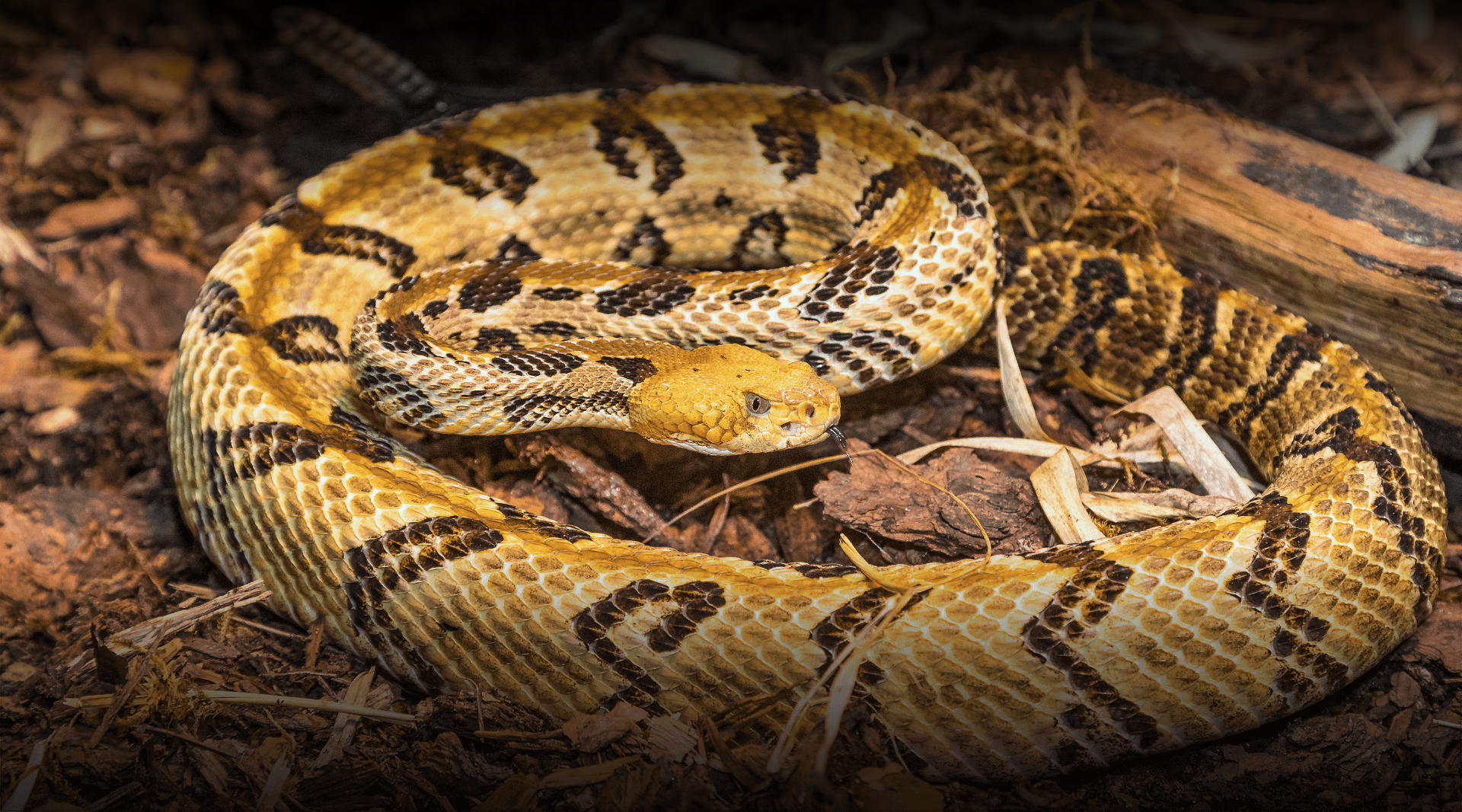Rattlesnakes! The word alone fills most people with fear and anxiety, because they have no experience in dealing with snakes. Yet we should learn to appreciate the rattlesnake as one of the most efficient and specialized predators on Earth. That famous rattle at the end of a rattlesnake’s tail is made of interlocking rings, or segments of keratin—the same material our fingernails are made of. When vibrated, the rattle creates a hissing sound that warns off potential predators. It is an extremely effective and highly evolved predator-avoidance system. Another rattlesnake characteristic is the "pit" on each side of the head, which is a heat-sensitive organ for locating prey. The Zoo is home to 13 rattlesnake species, representing rattlers found both near and far. See them in our Reptile House, along our Reptile Walk, and in Elephant Odyssey.
Did you know? Rattlesnake mothers don’t lay eggs but give birth instead. While populations of many rattlesnake species are stable, some are endangered.





